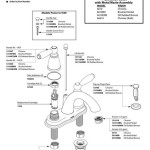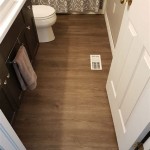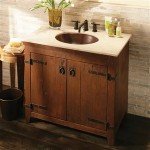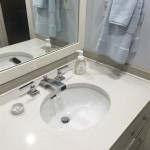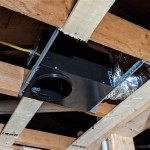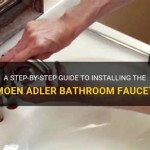```html
How to Prepare a Mould Bathroom Ceiling for Painting
Mould growth in the bathroom, especially on the ceiling, is a common problem. This is due to the high humidity and lack of proper ventilation. Addressing this issue proactively is crucial, not only for aesthetic reasons but also for the health and structural integrity of the room. Painting over mould without proper preparation is merely a temporary cosmetic fix. The mould will likely reappear, potentially causing more significant issues in the long run. Therefore, thorough preparation is paramount to ensure a successful and long-lasting paint job.
The process of preparing a mouldy bathroom ceiling for painting involves several key steps. These include identifying the type of mould, proper cleaning and disinfection, addressing the source of moisture, applying a suitable primer, and finally, applying a mould-resistant paint. Each of these steps requires careful attention to detail and the use of appropriate materials and techniques.
Identifying the Type of Mould and Assessing the Extent of the Problem
Before commencing any cleaning or painting, it's essential to identify the type of mould present and assess the extent of the problem. While most bathroom mould is surface-level and relatively harmless, certain types, such as black mould (Stachybotrys chartarum), can pose significant health risks, especially to individuals with respiratory problems, allergies, or weakened immune systems. If you suspect black mould or if the mould covers a large area, it is advisable to consult a professional mould remediation specialist.
Visually inspect the ceiling for signs of mould growth. Note the color, texture, and distribution of the mould. Check for any underlying structural damage to the ceiling, such as water stains, sagging, or crumbling plasterboard. This could indicate a more serious water leak that needs to be addressed before proceeding with the preparation.
Small, isolated patches of mould typically indicate a surface-level problem that can be addressed with DIY methods. However, extensive mould growth, especially if accompanied by structural damage, warrants professional intervention. Addressing the underlying cause of the moisture is also crucial; otherwise, the mould will simply return.
Cleaning and Disinfecting the Mould-Affected Area
Once the type and extent of the mould have been assessed, the next step is to thoroughly clean and disinfect the affected area. This process aims to kill the mould spores and remove any visible mould growth from the ceiling surface. Proper safety precautions are essential during this stage to protect yourself from potential health risks.
Begin by wearing appropriate protective gear, including gloves, a mask (preferably an N95 respirator), and eye protection. This will minimize your exposure to mould spores and cleaning chemicals. Ensure the bathroom is well-ventilated by opening windows and running the exhaust fan. This will help to dissipate any fumes and reduce the humidity level.
Several effective cleaning solutions can be used for mould removal. A mixture of bleach and water (1 part bleach to 3 parts water) is a common and readily available option. Alternatively, you can use a commercially available mould and mildew cleaner specifically designed for bathroom surfaces. Avoid mixing bleach with ammonia or other cleaning products, as this can create dangerous and toxic fumes.
Apply the cleaning solution to the mould-affected area using a sponge, cloth, or spray bottle. Allow the solution to sit on the surface for approximately 10-15 minutes to allow it to penetrate and kill the mould spores. Scrub the area gently with a brush or sponge to remove any visible mould growth. Avoid excessive scrubbing, as this can damage the ceiling surface.
Rinse the area thoroughly with clean water to remove any residual cleaning solution. Use a clean sponge or cloth to wipe down the ceiling. Allow the ceiling to dry completely before proceeding to the next step. You can use a fan or dehumidifier to accelerate the drying process.
For stubborn mould stains, you may need to repeat the cleaning process several times. In some cases, sanding the affected area may be necessary to remove any remaining mould residue. Use fine-grit sandpaper and wear a mask to avoid inhaling dust particles.
Addressing the Source of Moisture
Cleaning and disinfecting the mould is only a temporary solution if the underlying cause of the moisture problem is not addressed. Mould thrives in damp and humid environments, so it is essential to identify and eliminate the source of moisture to prevent recurrence. Common causes of moisture in bathrooms include leaking pipes, inadequate ventilation, condensation, and water damage.
Inspect the plumbing fixtures in the bathroom, including the shower, toilet, and sink, for any signs of leaks. Check the pipes and connections for drips or seepage. Repair any leaks promptly to prevent further water damage and mould growth.
Ensure the bathroom is adequately ventilated. An exhaust fan is essential for removing moisture-laden air after showering or bathing. Make sure the exhaust fan is functioning properly and that it is sized appropriately for the size of the bathroom. Run the exhaust fan for at least 20 minutes after showering or bathing to remove excess moisture.
Condensation can also contribute to mould growth. Improve ventilation by opening windows or using a dehumidifier. Insulating cold water pipes can help to reduce condensation. Addressing any water damage, such as leaks from the roof or walls, is also crucial to preventing moisture problems in the bathroom.
If you suspect a more serious water leak, such as a hidden pipe leak within the walls or ceiling, it is advisable to consult a professional plumber or water damage restoration specialist. They can use specialized equipment to detect leaks and repair them effectively.
Priming and Painting the Ceiling
Once the ceiling has been thoroughly cleaned, disinfected, and dried, and the source of moisture has been addressed, the next step is to prime and paint the surface. Proper priming is essential for sealing the ceiling, preventing mould regrowth, and ensuring the paint adheres properly.
Apply a mould-resistant primer to the entire ceiling surface. Choose a primer specifically designed for use in bathrooms, as these primers typically contain mildewcides that inhibit mould growth. Follow the manufacturer's instructions for application. Use a brush or roller to apply the primer evenly to the ceiling. Allow the primer to dry completely before proceeding to the next step.
After the primer has dried, apply two coats of mould-resistant paint to the ceiling. Choose a paint specifically designed for use in bathrooms, as these paints typically contain mildewcides and are resistant to moisture and humidity. Follow the manufacturer's instructions for application. Use a brush or roller to apply the paint evenly to the ceiling. Allow each coat of paint to dry completely before applying the next coat.
Consider using a semi-gloss or gloss paint finish for bathroom ceilings. These finishes are more resistant to moisture and easier to clean than matte finishes. Avoid using flat paint finishes in bathrooms, as they tend to absorb moisture and are more susceptible to mould growth.
Proper ventilation is important during the painting process. Open windows and run the exhaust fan to help the paint dry faster and reduce the risk of fumes. Avoid painting when the humidity is high, as this can affect the paint's drying time and finish.
After the paint has dried completely, inspect the ceiling for any imperfections or areas that need touch-up. Use a small brush to apply touch-up paint as needed. Clean up any paint splatters or drips immediately. With proper preparation and painting techniques, the bathroom ceiling should be mould-free and aesthetically pleasing.
```
How To Paint A Ceiling Diy Guide

The Guide To Painting Your Bathroom Ceiling By Mira Showers

Painting Over Mould And Damp Expert Advice

Cleaning Mrs Hinch Fans Share Tips To Remove Ceiling Mould Express Co

Best Paint For Steamy Bathroom Ceiling Eco Inc

How To Prevent Mould On The Bathroom Ceiling Dbs Bathrooms

Bathroom Ceiling Mold Removal When To Clean Call Branch Environmental

How To Repair A Ling Bathroom Wall Or Ceiling Melanie Lissack Interiors

How And When To Paint Over Mouldy Walls Inexpensive Way Kill Mould Express Co

I Have A Mould Problem On My Bathroom Ceiling How Do Treat It Crowies Paints
Related Posts
